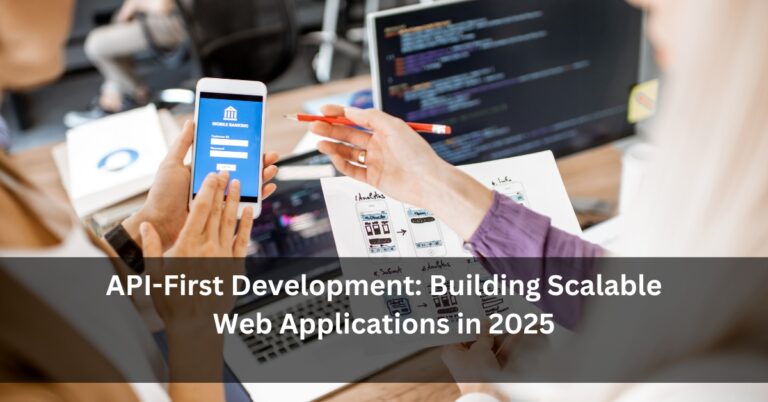Augmented Reality (AR) and Virtual Reality (VR) Integration in Web Design
In recent years, technology has significantly changed how we experience the internet. One of the most exciting developments in web design is the integration of Augmented Reality (AR) and Virtual Reality (VR). These technologies are not just buzzwords but powerful tools that can transform ordinary websites into interactive and immersive experiences.
At FutureAI, we believe that AR and VR integration will play a key role in the future of web development, especially in India’s growing digital landscape. This article will help you understand what AR and VR are, why they matter in web design, and how they can benefit your business.
What is Augmented Reality (AR) and Virtual Reality (VR)?
Before diving into their application in web design, it is important to understand the basic difference between AR and VR.
- Augmented Reality (AR) enhances the real world by adding digital elements such as images, sounds, or information. For example, when you use your smartphone camera to see how a piece of furniture fits in your room, that’s AR at work. It blends the physical and digital worlds in real-time.
- Virtual Reality (VR), on the other hand, creates a completely digital environment that users can explore. VR typically requires a headset or other devices to immerse users in a 3D space, such as a virtual showroom or a training simulation.
Both technologies aim to make digital experiences more engaging and interactive, but they do so in different ways.
Why Should Businesses Consider AR and VR in Web Design?
Integrating AR and VR in websites is not just a trend; it brings real value to businesses and their customers. Here are some key reasons why AR and VR are gaining attention in web development:
1. Better User Engagement
Websites with interactive AR or VR features encourage visitors to spend more time exploring content. Instead of just reading or viewing static images, users can interact with products or environments. This engagement helps build a stronger connection with your audience.
2. Higher Conversion Rates
When customers can virtually try on products or see them in their own environment, they feel more confident about their purchase. This reduces hesitation and increases the likelihood of completing a transaction.
3. Stand Out from the Competition
Many businesses still rely on traditional websites. By integrating AR and VR, companies can differentiate themselves and attract tech-savvy customers who appreciate innovation.
4. Wide Applications Across Industries
AR and VR are not limited to retail. They are useful in sectors like real estate (virtual tours of properties), education (interactive learning modules), healthcare (simulation training), and many more.
How Can AR and VR Be Integrated Into Websites?
Web development is evolving to support AR and VR experiences without requiring users to download extra apps. Technologies like WebAR and WebVR allow AR/VR content to run directly in web browsers, making it easier for users to access these features.
Some points to consider when adding AR or VR to your website:
- Make It Mobile-Friendly: Most internet users in India access websites through smartphones. AR and VR experiences should be optimized for mobile devices to reach a wider audience.
- Keep User Experience Simple: While these technologies can be complex, the way users interact with them should be intuitive and easy to understand.
- Test Across Devices: Different devices and browsers behave differently. Testing ensures that your AR/VR features work smoothly for everyone.
- Focus on Speed and Performance: AR and VR features can be resource-heavy. It is important to optimize performance so that your website remains fast and responsive.
At FutureAI, we have expertise in building websites that integrate these advanced technologies while maintaining ease of use and accessibility.
Real-Life Examples of AR and VR in Web Design
Here are a few examples that show how AR and VR are being used effectively in web development:
- Retail: Many brands allow customers to try on clothes, accessories, or makeup virtually using their phone cameras. This reduces the need for physical visits and helps in making quicker buying decisions.
- Real Estate: Virtual tours let potential buyers explore properties online before visiting in person. This saves time and creates a more immersive experience.
- Education: Schools and training centres are using VR simulations to teach complex subjects, making learning more engaging.
- Healthcare: AR and VR are used for surgical training and patient education, improving outcomes and safety.
The Growing Importance of AR and VR in India
India is seeing rapid growth in internet users and smartphone adoption. This creates an ideal environment for AR and VR technologies to flourish. Indian businesses, from startups to established companies, are exploring these tools to enhance digital customer experiences.
Companies offering AR/VR solutions are gaining momentum, helping sectors like e-commerce, education, and healthcare innovate their services. For businesses looking to stay competitive, investing in AR/VR integration can be a smart step forward.
How FutureAI Supports Your AR/VR Web Development Needs?
At FutureAI, we focus on delivering web development solutions that leverage the latest technologies. Our team works closely with clients to understand their goals and build websites that are not only visually appealing but also technologically advanced.
We ensure that AR and VR features on your website are practical, user-friendly, and tailored to your target audience. Whether you want to showcase products in 3D, offer virtual tours, or create interactive learning platforms, we can help make it happen.
By partnering with FutureAI, you get the benefit of expert guidance and the latest tools to stay ahead in the digital landscape.
Conclusion
Augmented Reality and Virtual Reality are no longer just futuristic concepts; they are transforming how websites are designed and experienced today. These technologies offer new ways to connect with customers, improve engagement, and drive business growth.
For Indian businesses eager to embrace innovation, integrating AR and VR into your website is a promising opportunity. With the right approach and expert support from FutureAI, you can create a digital presence that stands out and delivers real value.
If you want to explore AR and VR integration in your web development projects, feel free to reach out to FutureAI. Together, we can build websites that not only look great but also offer exciting, immersive experiences for your users.







